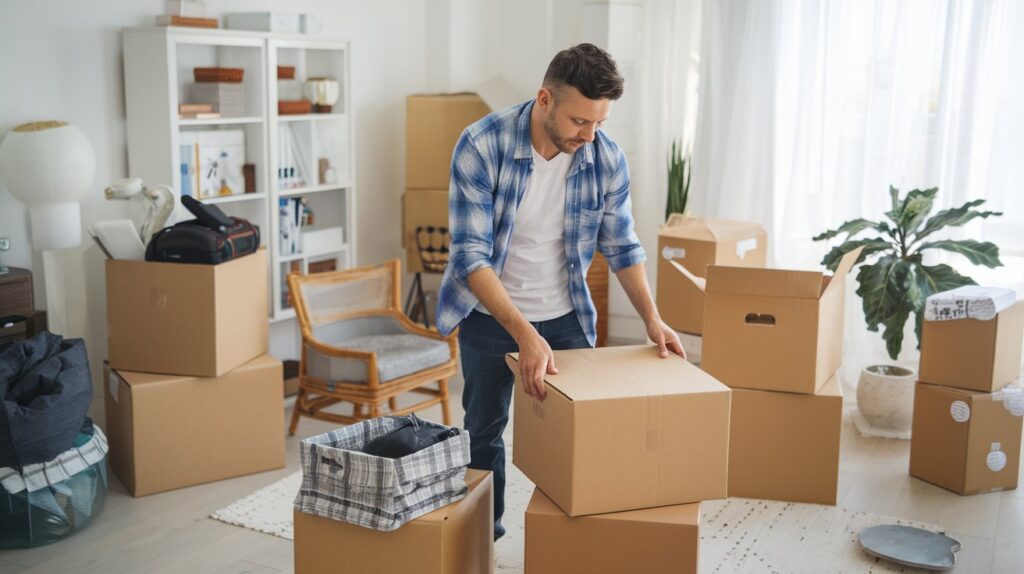How well your moving day goes depends on how much you prepare before the movers arrive. Experienced movers can handle the heavy lifting and transportation logistics, but homeowners who take steps to get their property ready for the move can make it go more smoothly, save money, and avoid damage.
A lot of homeowners don’t realize how much planning ahead can affect how their move goes. What experienced movers know is that homes that are ready according to professional standards make it easier for teams to do their jobs, lower the risk of delays, and protect both property and belongings from damage. This preparation goes beyond just packing and includes planning that takes into account access, safety, and logistics.
Making Work Areas and Access Routes Clear
The physical paths that movers take to move your things have a direct effect on how quickly and safely your move goes. Clear, unobstructed paths from each room to the exit keep things moving quickly, lower the risk of injury, and protect walls, doorframes, and floors from damage. The first step in getting ready is to take up area rugs that could trip people and move decorative items that could get damaged by furniture that is moving.
When planning how to get furniture out, it’s important to measure doorways. Standard doorways are 32 inches wide, but some pieces of furniture may need to have their door hardware removed or other ways to get out. Teams can bring the right tools and plan enough time for complicated removals if they know about these problems before moving day.
It is important to plan ahead for parking for moving trucks, especially in cities where streets are narrow or in neighborhoods where parking is limited. Confirming that trucks can get to your property stops you from having to scramble at the last minute to find another place to park, which could add a lot of time and money to the move.
Getting Ready for Utilities and Systems
Before moving day, you need to pay special attention to the electrical and HVAC systems in your home. Professional movers need enough light in every room of your house, especially in places like attics, basements, and other areas where natural light might not be available. Moving people can work safely and quickly in all parts of your property if you test all of the lights and replace any burned-out bulbs.
Getting to water is important for cleaning supplies and emergencies. Keeping the water connected until the moving team is done with their work makes it easy to clean up any spills or accidents that happen during the move right away.
Preparing the HVAC system means changing the temperature settings to make up for doors being open for a long time and more people being around. Extreme weather can make it dangerous for movers and damage delicate things.
Keeping Your Property Safe
To protect the surfaces inside your home, you need to take steps that go beyond what moving companies usually do as part of their standard service. Installing high-quality floor protection materials along the main moving paths is especially important for hardwood, tile, or other surfaces that can be scratched or damaged by moving equipment.
Wall and corner protection is especially important in homes with narrow hallways or tight turns where furniture could hit surfaces when it is being moved. You can put up temporary professional-grade corner guards and wall padding to keep painted surfaces and architectural details from getting scratched, dented, or damaged in any other way.
The National Association of Productivity and Organizing Professionals says that homeowners who take the time to prepare properly have a lot fewer damage claims and a much easier time moving.
Safety and Keeping Track of Valuable Things
When moving high-value items, you need to take extra care that goes beyond the usual moving rules. You should find and separate your important papers, jewelry, family heirlooms, and electronics from the rest of your household goods long before moving day.
Putting your valuables in a safe, designated place before you move them yourself makes sure they don’t accidentally get loaded onto the moving truck. To avoid confusion, you should clearly mark and tell your moving team about this area.
Never pack cash, important papers, or things that can’t be replaced with regular household goods. Instead, you should keep these things with you the whole time you’re moving.
Timeline and Coordination for Preparation
A structured timeline that starts weeks before your planned moving date is the key to getting ready well. Three weeks before the day you move is the best time to start getting ready for the move. This schedule gives you enough time to order protection materials, set up utilities, and take care of any property problems that could make moving more difficult.
Talking to your moving team about what you expect from them in terms of preparation makes sure that everyone knows what they need to do and when. Moving companies like it when their customers are well-prepared because it lets them do a better job and stay on schedule.
Day Before Final Preparations
The night before your move, you need to do certain things to get ready for a successful moving day. Confirming arrival times, contact information, and any last-minute details with your moving team will help things go smoothly and avoid confusion.
Putting together a moving day survival kit with snacks, drinks, phone chargers, cleaning supplies, and first aid supplies will help you deal with the day’s problems. Consumer Reports says that homeowners who do a lot of planning before moving have 40% fewer problems on moving day and are happier with the whole process.

